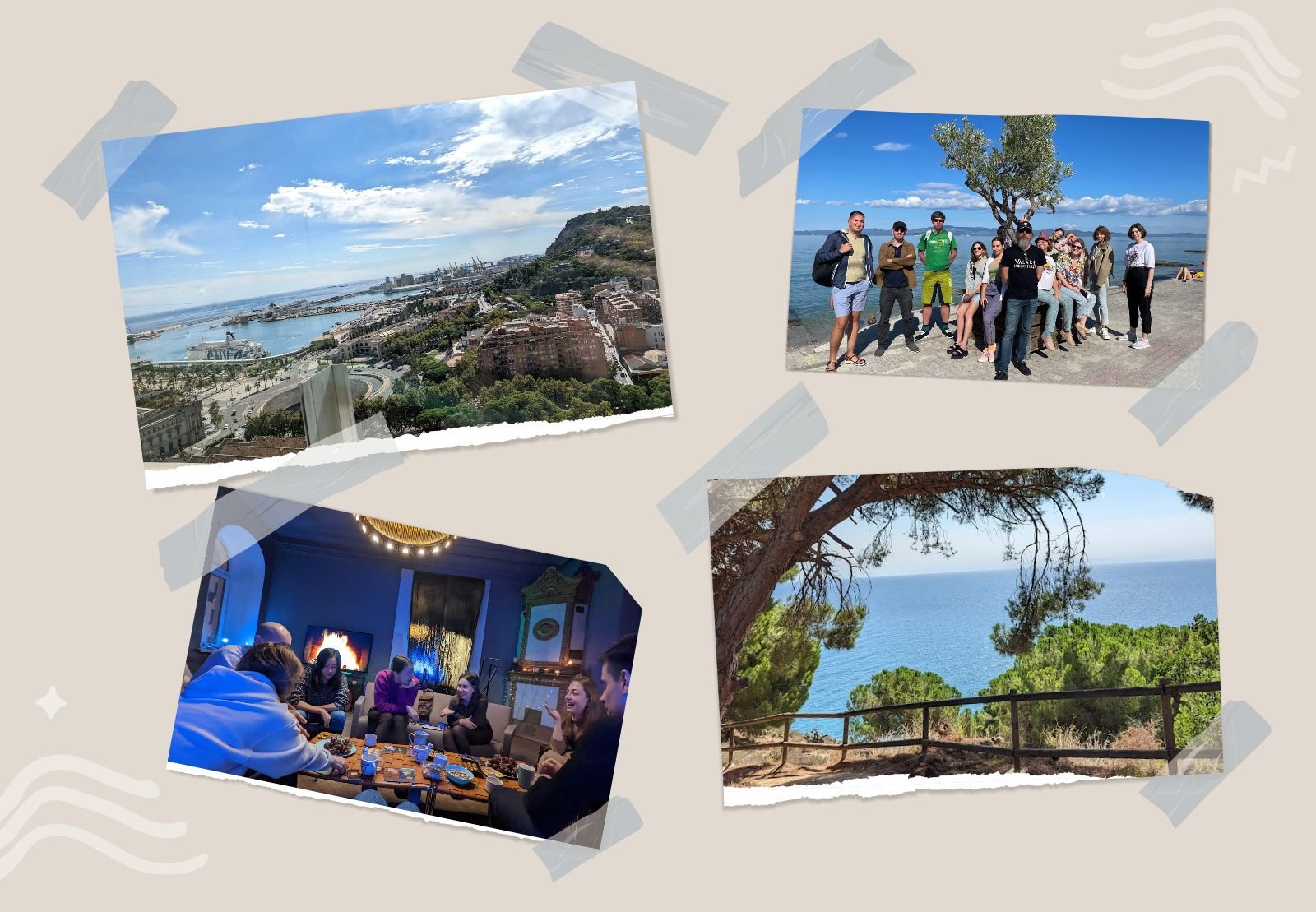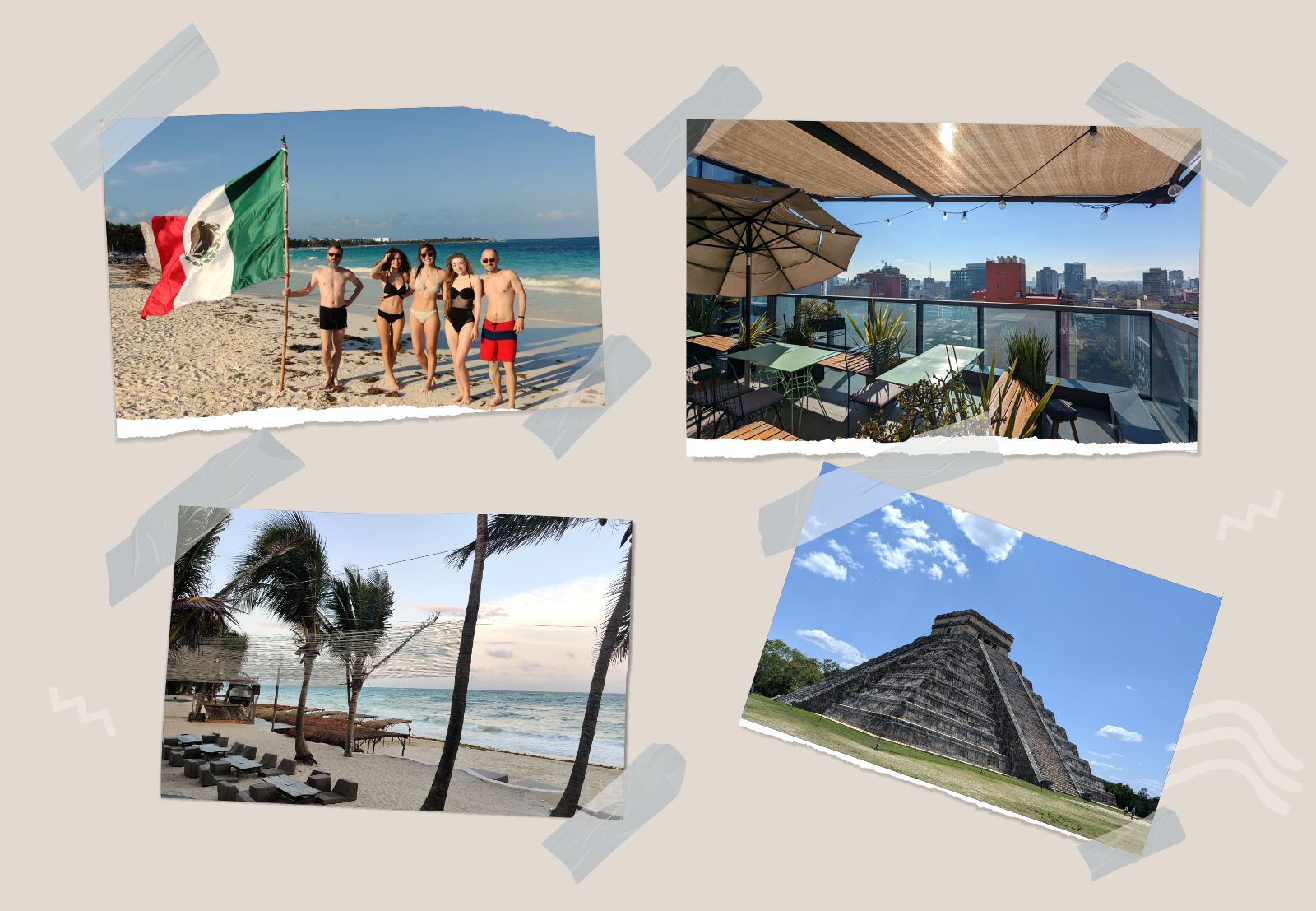How to plan a company retreat

One of the most efficient ways to make people feel cozy and cared for is to arrange a great company retreat, or workation for them. It’s a sort of holiday event for a remote team where people get together in a beautiful place to hang out and work side by side.
We believe that workations are the best type of in-person gatherings for remote teams. They serve as a form of first aid for fully-distributed teams to heal all sorts of communication, intercultural, and work-related issues. Therefore, they should be included in a fully-remote company’s basic benefits package. Bringing people to a colocated environment 2–4 times a year has a major impact on combating social isolation, preventing burn-out, and fostering new ties in the team that eventually can grow into new products for the business.
Looking through the pictures from a company retreat, you might feel that there’s nothing easier than managing this event for your remote team. All you have to do is choose an appealing spot by the sea, book the flights, and there you are: enjoying the time together. However, when you have more than five people in a team, things can get complicated.
Flights and rides
When it comes to traveling, everyone has their own personal preferences. To manage the booking workload, consder onboarding a travel management provider, e.g. TravelPerk, FlightFox, or Kayak Business. Before choosing the best fit for your team, check the rates, flexibility policies, concierge service, and SSO options. Our vote goes to those that have concierge service (e.g., to help with Airbnb) and provide various travel options, including car rental and train ticket bookings.
Location

Good news: any appealing spot by the sea will do. Bad news: you have to consider entry requirements (like visas), flights length and price, seasonal features, things to do, lodging option, and other aspects of the trip.
Country
To make sure that everyone can enter the country you choose, you need to know the citizenship, residence permit, and visa status of your team-members. The easiest option would be to choose a country that will not require a visa for the majority of your team. Keep in mind that the reality of obtaining a visa might be totally different from what’s written in the documents, and so it’s always a good idea to check the live reviews on Reddit or other online communities for travelers. Another best practice is to have a local host from your teammates or to send an event coordinator from your team some 10–15 days in advance to explore the surroundings.
Venue
One of the best options that works really well for small teams of up to 30 people is to book a cozy central venue using Airbnb or similar platforms. This venue would serve as a hang-out spot for the whole team.

Central venue quality criteria:
- Space. There should be a huge living room with a welcoming sofa, large dining table, and a number of tiny cozy angles where your lovely introverts would be able to snuggle with their lovely laptops. An Instagrammable view and catchy design are also advantages.
- Area. In our experience, you can encounter spacious venues either in the downtown area of big cities or in the middle of nowhere. Both options might work or not work for your particular team. While a megapolis gives you plenty of activities and eating-out options, deliveries, and easy commuting, isolated houses in the woods will provide a chance to spend time closer to each other and create retreat vibes (together with rent-a-car/find-a-driver riddles). Make sure there are other lodging options nearby for those who wouldn’t get a bedroom in the central venue.
- Bedrooms Don’t get carried away with big beautiful apartments. In our experience, three-bedrooms are perfect for a central venue. This way you’ll have a spacious place without turning it into a dorm.
- Internet. The workation concept assumes that your team will spend some time working together while staying at the central venue. A wireless travel repeater will help enhance the connection.
- Dishwasher. Golden rule: wherever you are, your place should have a dishwasher. Just write it down.
Coworking is a second preferred option. Opt for modern, comfy, and relaxed options and try to avoid openoffice spaces that kill the vibes. One spacious, shared room for all of your team would be the best choice.
Time
The best timing for a workation depends on your business. It will never be possible to accommodate everyone’s preferences, so aim for a 60–70% participation rate from the very beginning. Check for the weather forecasts, local festivals and big events at your location to avoid overbooked venues, and give people the timeframes from the very beginning. Opt for planning at least 1.5–2 months in advance so that your team has enough time to check their travel docs and book convenient flights for a manageable price.
Length and schedule
Best workations are long workations. If your team is in the stage of forming, 2 weeks together will give everyone some understanding of who is who. The most bonding workation we had on a workation is a 1-month-long retreat to Mexico. The cozy, big house created a friendly atmosphere and the relaxed schedule allowed everyone to build connections naturally and without any pressure.
However, long workations are not always feasible, so here is the list of empirical observations to consider:
- Any workation that is up to 5 days long will turn into a marathon, both for organizers and for a team. By day 3-4, people will be exhausted and will stop showing up for any kind of activities.
- Plan lots of chillaxed working sessions where people can just be together without any need to interact.
- Make all of the activities optional.
- Teamleads HAVE TO make a conscious effort to use this time to get to know their teams, even if the gathering is only 1-day-long.
Activities
In Hygge companies, we always leave an opportunity for the teammembers to come up with any activity initiative. There are no limits and just one rule: they should convince somebody from the team to come along. Someone is arranging a winery tour, somebody goes for surfing classes, others prefer spending their evenings playing board games.
In case the team is new and timid, organizers need to think of activities themselves. Road trips to discover breathtaking views, cooking together and having quiet movie movie nights could be a good start for any team.
Memories
Another great way to bring people together is to make each workation special. There’s nothing funnier than watching your colleagues playing paparazzi with instant cameras or stepping out to share a funny story that contributes to your offline workshop. Be creative - polaroid photos, interactive workshops, cooking tutorials, cool custom hoodies. The world is your oyster!
Feedback
After the workation is over, talk to the team. Approach people individually and ask about their “here and now” experience. Put together a survey. Bring up a workation follow-up on a weekly call. Collect feedback of your MVP workation and try to improve the next gathering by relying on your data.
Read about other ways to engage your virtual team here.
